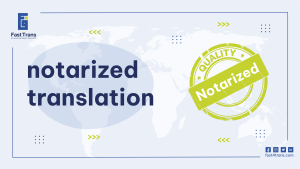Social Media Translation To Arabic unlocks engagement with over 400 million speakers, boosting brand visibility, inclusivity, and cultural relevance. More than just translation, it requires localization—capturing dialects, trends, and platform-specific nuances to resonate authentically.
By investing in professional adaptation over machine translation, brands enhance SEO, prevent cultural missteps, and create deeper connections. Whether through localized hashtags, tailored video captions, or dedicated Arabic-language accounts, strategic content adaptation helps businesses stand out, build trust, and thrive in the dynamic MENA digital landscape.
What is Social Media Translation To Arabic?
Social media translation to Arabic (SMT) refers to the translation of various types of social media content into Arabic. Contrary to popular belief, social media is not limited to online networking platforms like Facebook or Twitter; it actually extends to three other categories: user-generated social media content like YouTube and Wikipedia, eCommerce websites like Amazon, as well as online gaming platforms like Valorant. SMT involves translating captions, video descriptions, on-screen text, and audio content into Arabic, covering formats such as stories, posts, videos, reels, and tweets.
It is an emerging and underdeveloped branch of translation that began in the 2010s with globalization and the growing interest in social media platforms. By 2024, translating social media content into Arabic has become an absolute necessity, ensuring accessibility and engagement for Arabic-speaking audiences worldwide.
Read more: What’s the difference between Internationalization and Localization?
Why translating social media content to Arabic can be helpful?
Translating social media content into Arabic enhances brand inclusivity, engagement, and cultural relevance while boosting visibility in a market of over 400 million speakers. By localizing content with the right keywords and cultural nuances, businesses gain a competitive edge and strengthen their presence in the MENA region.
Let’s explore some of the benefits of translating social media content into Arabic below:
1. Show Respect and Foster Inclusivity
Most social media content is primarily in English, assuming that global audiences understand it fluently. However, Arabic is the fifth most spoken language in the world, with over 400 million speakers across the Middle East and North Africa (MENA). By translating social media content into Arabic, brands demonstrate respect and inclusivity for their existing Arabic-speaking audience while making it easier for new users to connect with and understand their brand.
2. Arabic SMT is a Catalyst for Engagement
Translating content into Arabic plays a key role in social media marketing, as it helps drive engagement. Arabic-speaking users are more likely to like, share, and comment on content that resonates with them in their native language. A familiar tone of voice makes communication more natural, increasing the chances of interaction and brand loyalty.
3. Improving SEO and Visibility
If your business is thriving in English-speaking markets, you may have already optimized your content for search engines like Google. However, entering the MENA region requires more than just English content. Arabic SMT, combined with localized keyword searches, can significantly boost your visibility, ensuring your content ranks well on search engines and within regional social media platforms.
4. Avoiding Cultural Insensitivity
What works in one culture may not work in another. Humor, expressions, and even visual content that are well-received in Western markets might not have the same effect in Arabic-speaking countries. Social media translation doesn’t just convert words; it localizes the content, ensuring that it aligns with Arabic cultural norms, avoids misunderstandings, and resonates with the audience.
5. Being on Top of Local Trends
Arabic social media trends evolve rapidly, and automatic translation tools often fail to capture the nuances of local slang, humor, and cultural references. Instead of relying on direct translations, brands that actively localize their content into Arabic can keep up with local trends and engage meaningfully with their audience. This enhances brand relevance and fosters deeper connections with Arabic-speaking users.
6. Gaining Competitive Advantage
By translating your social media content into Arabic, you open the door to a vast and growing market. Many international businesses still undervalue Arabic localization, meaning that those who invest in it gain a significant competitive edge. From SEO improvements to cultural relevance, Arabic SMT helps brands establish a strong presence in a region with high digital engagement.
Read more: Digital marketing benefits of localization
Top tips for doing Social Media Translation To Arabic the right way
1. Avoid Machine Translation
With creative social media content, machine translation often produces disappointing results. Arabic social media is largely driven by engaging and attention-grabbing posts, which can lose their impact when translated automatically. To maintain brand identity and a consistent tone, it’s best to work with a professional translator who understands how to convey the same effect in Arabic. A skilled translator can also help identify homonyms, culturally inappropriate phrases, and nuances that could affect your message’s effectiveness.
2. Consider Creating Separate Accounts for Arabic Content
Many global brands create dedicated social media accounts for different languages, and this approach works particularly well for Arabic-speaking audiences. For example, KFC has a specific Instagram page called “KFC Arabia” for Arabic content, rather than mixing languages on a single account.
While some brands choose to post in multiple languages within the same account, this can sometimes be overwhelming for users. Arabic text is typically longer than English, making bilingual captions appear cluttered. To provide a seamless experience, consider whether a dedicated Arabic-language account would better serve your audience and business goals.
3. Know Your Arabic-Speaking Audience
Understanding your audience goes beyond language—it includes knowing their interests and preferred social media platforms. While platforms like Facebook, Instagram, and Twitter are popular in the Arab world, some regions favor others. For example, Snapchat and TikTok are widely used among younger Arabic-speaking audiences, particularly in the Gulf region.
Additionally, Arabic-speaking users engage differently based on dialects and cultural contexts. A one-size-fits-all approach won’t work for a diverse audience spanning the Middle East and North Africa. Tailor your content to resonate with specific Arabic-speaking markets.
4. Invest in Arabic-Speaking Experts
Hiring native Arabic speakers is crucial for maintaining authenticity and cultural relevance. Many top brands recognize the importance of preserving brand identity across different regions, which is why they employ global social media managers and native translators. Whether as part of an in-house team or through outsourcing, having Arabic-speaking professionals involved in content creation ensures that your brand communicates effectively with its audience.
5. Using the Right Hashtags and Emojis
Hashtags require careful localization when translating into Arabic. Instead of direct translation, it’s essential to experiment with hashtags that are commonly used and relevant in Arabic-speaking markets to maximize engagement and visibility.
Emojis also carry different meanings across cultures. While certain emojis have universal appeal, others can be misinterpreted. For example, in the U.S., teenagers often use the “skull emoji” 💀 to indicate laughter, whereas Arabic-speaking users might not associate it with humor. Similarly, some emojis might have religious or cultural connotations in Arabic-speaking countries that differ from Western interpretations.
Why is Social Media Translation To Arabic so difficult?
Social media translation to Arabic can be particularly challenging. First, because the language is rich and complex, and adapting it to evolving social media trends requires continuous experimentation with content type, tone, register, and length. With platforms like X (formerly Twitter) and Instagram, there is limited space for written content, whereas Facebook allows for longer text. Arabic social media translators must consider these space constraints while also accounting for user attention span. Unlike traditional mediums like books or newspaper articles, social media users prefer short, engaging, and interactive content that encourages them to respond to calls to action.
Additionally, and most importantly, social media translation to Arabic relies heavily on cultural relevance. Arabic-speaking audiences come from diverse countries with varying dialects, expressions, and cultural nuances, making it essential to choose language that resonates with the intended demographic. The goal of social media marketing is to gain the trust and engagement of the target audience, placing significant pressure on translation to maintain authenticity and effectiveness.
The bottom line is that, unlike other types of translation, the dynamic nature of social media—combined with Arabic’s linguistic diversity—requires flexibility to adapt to frequent platform updates, cultural shifts, trends, and language variations.
Examples of Social media platforms and how to translate each one
As a social media user, you already know that each platform works in its unique way. This difference impacts translation. Let’s look at how the most commonly used platforms are different and how translators can approach each one:
Facebook has the Global Pages localization feature which can come in handy for international brands that want to post content according to different regions. It allows for posting region-specific content without creating different Facebook pages for each language.
It’s a win-win situation that ensures the target audience receives content in their language, while at the same time rewarding businesses by directing all engagement to one global account with one URL.
Instagram is a lot trickier, unlike Facebook, brands on Instagram can’t post regionally targeted content. They can maintain one account that keeps all audiences in one place. However, this option entails translating captions and videos, into no more than two languages. If your business wants to target several languages, then translating your post captions into all of them may not be the best idea. It’s not only distracting for the reader, but is generally a poor way to market your brand, and the character limit on captions is 2,200 characters. The other option is to create separate local accounts that have language specific and culturally tailored content.
Tiktok
TikTok has a built-in automated translation tool that supports plenty of languages, but it only translates captions and video descriptions. TikTok is another popular visual content platform that relies heavily on short videos with on-screen text or audio. Depending on the translation of captions won’t be enough if a huge part of your audience aren’t English speakers.
The solution is to either create separate localized accounts, or translate the on-screen text, and transcribe the audio into the target language to make your content more user-friendly.
Youtube
Like TikTok, many content creators and vloggers on YouTube understand the value of translating and globalizing their content, and for this reason, they create captions in different languages and translate the video description if necessary.
X “Twitter”
Although X doesn’t have localization features like Facebook, it remains a valuable and creative platform for successful marketing strategies. Most brands focus on one global account for X before creating other local or country-specific ones. SMT on X takes a very creative shape because it depends on wordplay, and a little bit of puns.
Again, KFC is an interesting example of a food brand that aced the X competition. Their X KFC Spain account goes viral because of its funny culturally relevant memes. The account is no longer about pushing the users to buy from KFC, it has created a large KFC community that’s quite impressive.
Fast Trans is your Social media translation choice
Fast Trans has gathered up a native of native in-house and outsourced professional translators with demonstrated years of experience to handle your social media translation projects. It prides itself on being your best go-to choice, but why?
Our team understands what it takes for your business to flourish and make an impact in the MENA region. They combine nativity, and social media experience together to help your business grow in the contemporary online world.
Unlocking the potential of your business in the Arab world starts here.
Conclusion
Social Media Translation To Arabic is an essential strategy for brands looking to engage with a vast audience of over 400 million Arabic speakers. This specialized form of localization extends beyond traditional networking platforms like Facebook and Instagram to include eCommerce websites, video-sharing platforms, and online gaming communities. By ensuring culturally relevant and linguistically accurate translations, businesses can enhance visibility, drive engagement, and foster deeper connections with Arabic-speaking audiences. Effective content adaptation involves more than direct translation—it requires attention to dialects, local trends, and platform-specific nuances to maintain authenticity and maximize impact.
Adapting content into Arabic provides a competitive edge by improving SEO rankings, boosting brand inclusivity, and preventing cultural misinterpretations. Brands that invest in professional translators over automated tools ensure clarity and consistency in messaging, avoiding common pitfalls such as awkward phrasing or inappropriate humor. Additionally, establishing dedicated Arabic-language social media accounts can further streamline communication and improve audience experience. Whether through localized hashtags, tailored video captions, or interactive posts, integrating Arabic content into digital marketing strategies allows brands to stay relevant, build trust, and effectively expand their presence in the MENA region.











